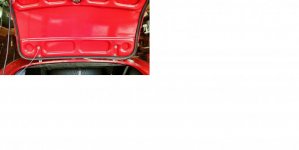Hi guys,
The rubber boot seal on my BJ8 was incorrectly fitted to the body of the car, instead of the boot itself which I see from pictures is the correct placement.
I am in the middle of the job of gently removing the old glue and rubber from the body of the car which is slow going but seemingly successful!
I have bought a new strip as the old was past it's best.
Does anyone have any advice of what type of adhesive to use and what the correct placement of the rubber is around the boot lid as it is not obvious to me.
Thanks for your help.
James
The rubber boot seal on my BJ8 was incorrectly fitted to the body of the car, instead of the boot itself which I see from pictures is the correct placement.
I am in the middle of the job of gently removing the old glue and rubber from the body of the car which is slow going but seemingly successful!
I have bought a new strip as the old was past it's best.
Does anyone have any advice of what type of adhesive to use and what the correct placement of the rubber is around the boot lid as it is not obvious to me.
Thanks for your help.
James

 Hi Guest!
Hi Guest!

 smilie in place of the real @
smilie in place of the real @
 Pretty Please - add it to our Events forum(s) and add to the calendar! >>
Pretty Please - add it to our Events forum(s) and add to the calendar! >> 


